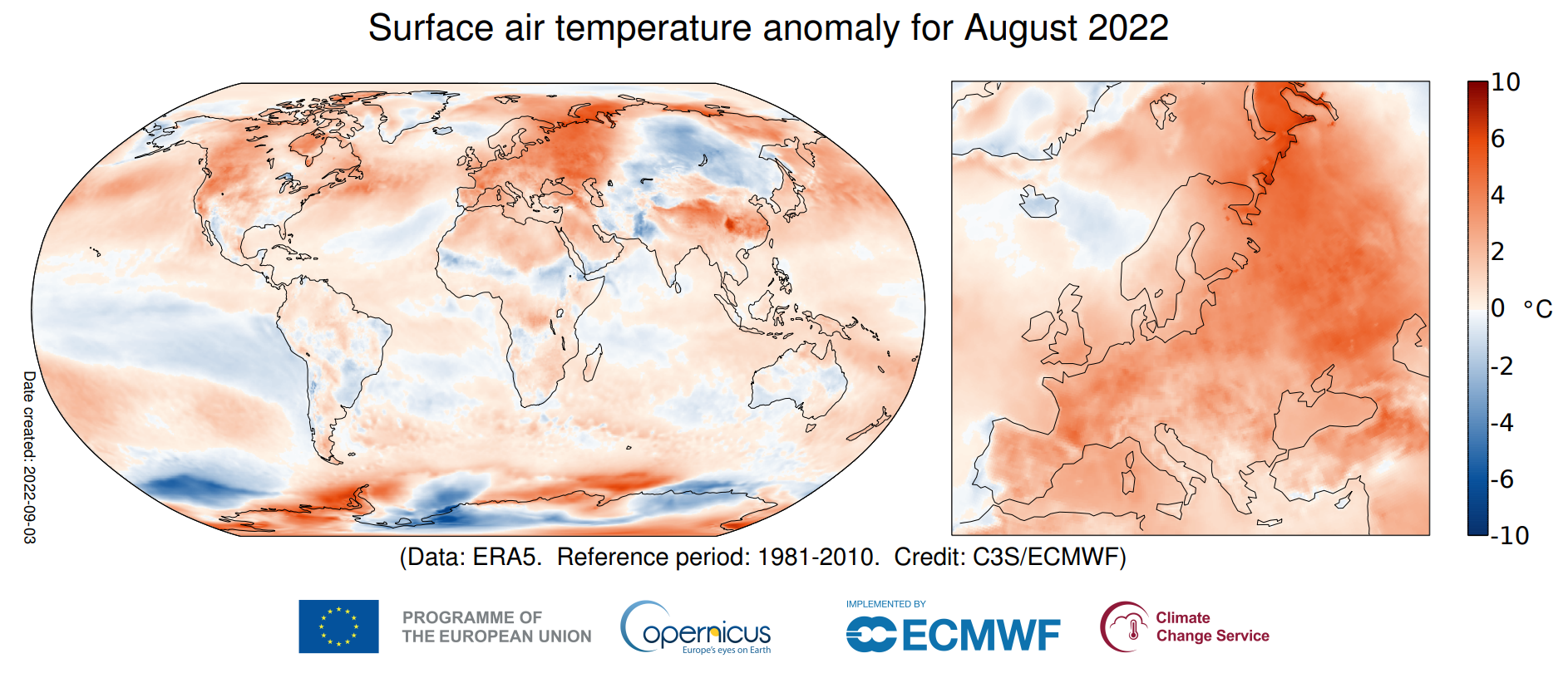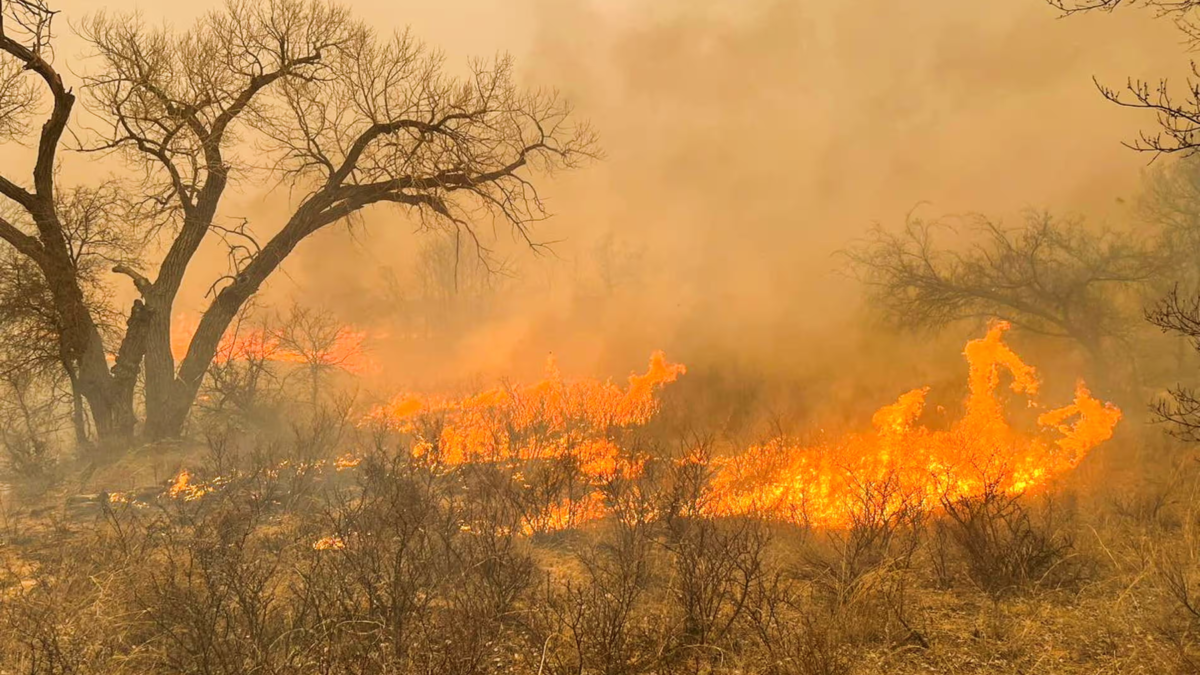Europe’s hot summer of 2022 shatters records – “We’ve not only had record August temperatures for Europe but also for summer, with the previous summer record only being one year old”

By Matt McGrath
8 September 2022
(BBC News) – This summer was the hottest on record in Europe, according to data from EU satellite monitoring.
A series of extreme heatwaves and a long running drought saw June, July and August shatter the previous high mark for temperature.
The Copernicus Climate Change Service said the data showed August 2022 in Europe was the warmest on record by “a substantial margin.”
Globally, the researchers say August was the third warmest yet recorded.
It will come as no surprise to anyone who experienced this summer’s intense heat across the continent that the temperature record across Europe has been broken by a large margin.

According to data from Copernicus, this year saw a new record for both the summer as a whole and for the month of August.
The summer was 0.4C warmer than the previous record, only set last year.
August was a whopping 0.8C warmer than the same month in 2018.
“An intense series of heatwaves across Europe paired with unusually dry conditions, have led to a summer of extremes with records in terms of temperature, drought and fire activity in many parts of Europe, affecting society and nature in various ways,” said Freja Vamborg, a senior scientist with the Copernicus Climate Change Service.
“The data shows that we’ve not only had record August temperatures for Europe but also for summer, with the previous summer record only being one year old.”

In the UK, temperatures reached a new high of 40.3C, recorded in Coningsby in Lincolnshire on 19 July 2022. It was a significant leap over the previous record of 38.7C set in 2019.
These extremes were also seen in many other countries with 64 different areas of France experiencing record highs, while temperatures in Portugal reached 47C in July.
Europe also experienced the worst drought conditions in 500 years.
Around the globe the high temperatures in August persisted widely, with drought conditions also affecting China.

But it wasn’t a uniform picture – many areas had significant downpours resulting in flooding.
As we’ve seen most recently in Pakistan, wetter than average conditions have triggered huge floods, leading to loss of life and property.
The satellite data also shows that it was wetter than average over most of Scandinavia and in parts of southern and southeastern Europe, where a “derecho” storm brought extreme winds and rain.
Climate scientists say that both extreme heat and wet conditions are to be expected in a warming climate where emissions of warming gases from human activities have driven up temperatures by over 1.1C at present.


